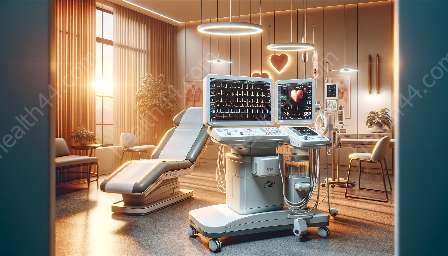Exercise stress testing with ECG/EKG machines is a valuable tool for assessing cardiovascular health and detecting potential issues. In this comprehensive guide, we will delve into the importance of stress testing, the role of ECG/EKG machines, and their compatibility with medical devices and equipment.
The Significance of Exercise Stress Testing
Exercise stress testing is a non-invasive diagnostic test that helps evaluate how well the heart performs during physical activity. It involves monitoring the heart's electrical activity while the patient is engaged in physical exercise, typically on a treadmill or stationary bicycle.
This type of testing is instrumental in diagnosing coronary artery disease, evaluating symptoms such as chest pain or shortness of breath, determining safe exercise levels for heart patients, and assessing the effectiveness of certain heart treatments.
Role of ECG/EKG Machines in Stress Testing
ECG (electrocardiogram) or EKG (electrocardiograph) machines play a central role in exercise stress testing. These machines are designed to record the electrical activity of the heart and can provide vital information during stress testing.
During exercise stress testing, ECG/EKG machines monitor the heart's electrical signals, providing valuable data on heart rate, rhythm, and any abnormalities or irregularities that may occur during physical exertion.
The data recorded by ECG/EKG machines during stress testing can help healthcare professionals assess the heart's response to exercise, identify potential issues such as arrhythmias or ischemia, and make informed decisions regarding patient care.
Compatibility with Medical Devices & Equipment
ECG/EKG machines are an integral component of medical devices and equipment used in various clinical settings. Their compatibility with other medical tools allows for seamless integration, efficient data transmission, and comprehensive patient monitoring.
These machines can be integrated with electronic health records (EHR) systems, allowing for streamlined documentation of stress test results and easy access to patient data. Additionally, they can be connected to other monitoring devices, such as blood pressure monitors and oxygen saturation sensors, to provide a more comprehensive view of the patient's physiological status during exercise stress testing.
Conclusion
Exercise stress testing with ECG/EKG machines offers valuable insights into cardiovascular health and is a critical tool for diagnosing and managing heart-related conditions. The compatibility of ECG/EKG machines with medical devices and equipment further enhances their utility, enabling healthcare professionals to deliver optimal care and support to patients undergoing stress testing.


